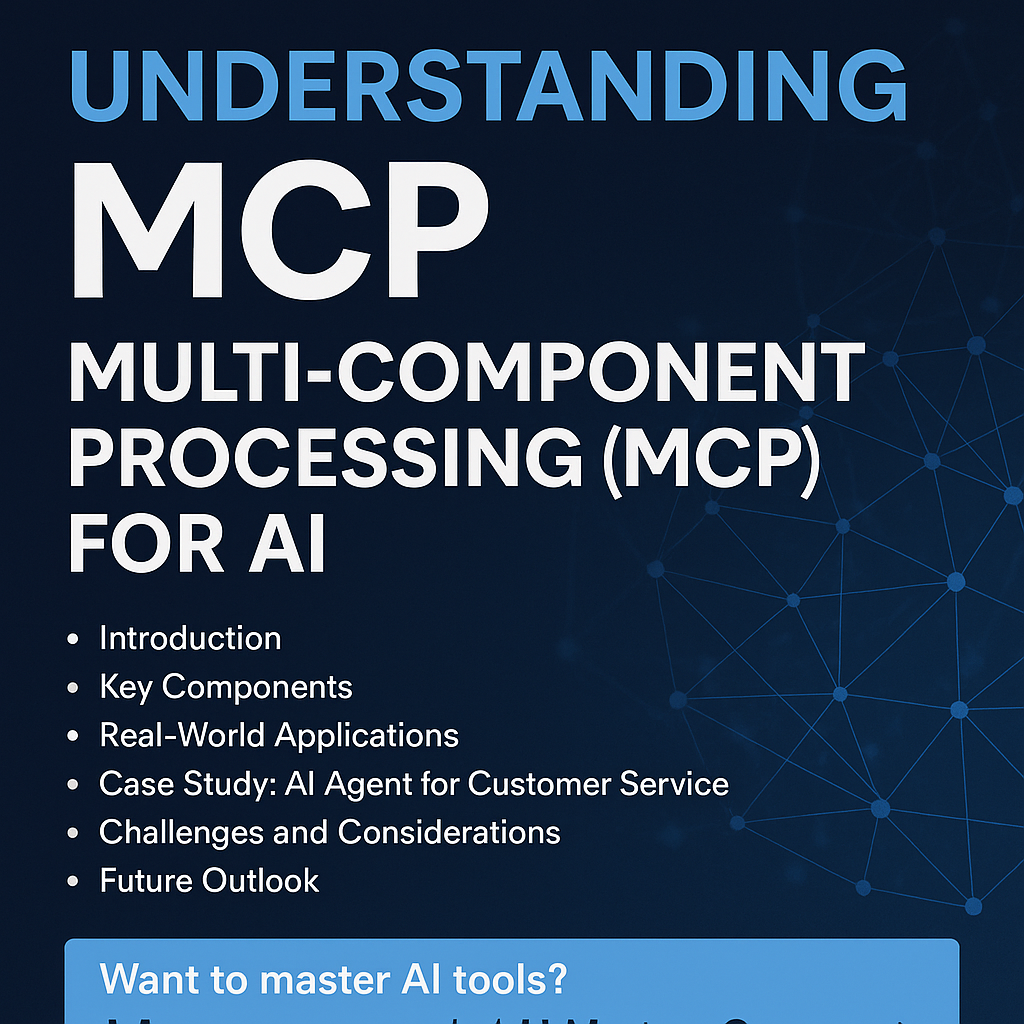Understanding Multi-Component Processing (MCP) for AI
Introduction
In the evolving world of artificial intelligence, one term gaining significant traction is Multi-Component Processing (MCP). It’s a new architecture paradigm that underpins many of today’s most advanced AI agents, combining multiple subsystems to handle complex workflows intelligently and efficiently.
What is Understanding Multi-Component Processing (MCP) for AI?
MCP refers to a design framework in AI where tasks are decomposed into modular components—each responsible for a distinct function—then orchestrated to act together as a cohesive system.
This approach differs from monolithic models. Instead of one AI trying to do everything, MCP leverages specialized modules (e.g., reasoning engine, task planner, tool executor, memory retriever) that collaborate through a central orchestration layer or protocol.
Key Components of MCP Architecture
| Component | Function |
|---|---|
| Planner | Decomposes goals into executable tasks |
| Executor | Handles API calls, file operations, or external tools |
| Memory System | Stores and retrieves context and history |
| Reasoner | Performs logic, decision-making, and reflection |
| Orchestrator | Manages communication and task flow among components |
Most MCP systems integrate LLMs (like GPT-4 or Claude) into some or all of these components, enhancing flexibility and adaptability.
Real-world Applications of MCP Today
Enterprise RPA (Robotic Process Automation): Combining AI with human-in-the-loop flows using structured MCP
Knowledge Assistants: Research bots that retrieve, analyze, summarize, and cite content across the web
Medical AI: Diagnosis + treatment planning + documentation generation
Sales Ops: Email sequencing + lead generation + CRM logging handled by multi-agent workflows
Case Study: MCP-Powered AI for Customer Support
Company: Mid-sized SaaS provider
Challenge: Too many support tickets, inconsistent responses
Solution: Implemented MCP-based agent with components for:
Natural Language Understanding
FAQ search & vector similarity
Action execution (e.g., refund API)
Response drafting & human approval queue
Results:
70% of tier-1 tickets auto-resolved
50% reduction in average resolution time
Human agents focused only on escalations
Challenges and Considerations
While powerful, MCP comes with its own complexities:
System Coordination: Ensuring components don’t conflict
Latency: Orchestrated steps can be slower than monolithic models
Debugging: Harder to trace errors across multiple components
Tool Dependency: Over-reliance on specific APIs or frameworks
To mitigate this, many developers adopt modular testing, logging protocols, and fallback mechanisms for graceful degradation.
Future Outlook
| Trend | Description |
|---|---|
| Open MCP Frameworks | Like CrewAI, LangGraph, and AutoGen becoming plug-and-play |
| Domain-Specific MCPs | Tailored for healthcare, law, finance |
| Cross-agent Collaboration | Multi-agent teams sharing tasks, memory, and intentions |
| Memory-as-a-Service | Externalized, persistent memory banks for agents to access |
| Self-Improving MCPs | Components that evaluate and update each other autonomously |
MCP is central to the emerging AI OS vision, where AI doesn’t just respond—it manages, learns, and scales intelligently.
Conclusion
Multi-Component Processing (MCP) is more than a technical framework—it’s the blueprint for the next wave of scalable, modular, and intelligent AI systems. As more businesses adopt MCP-powered agents, we’ll witness a shift from single-model tools to dynamic, orchestration-driven AI ecosystems.
🚀 Want to Learn MCP and Build AI Agents?
Join our recommended AI Mastery Course and gain hands-on experience designing workflows, building agents, and mastering the tools powering the AI future.

